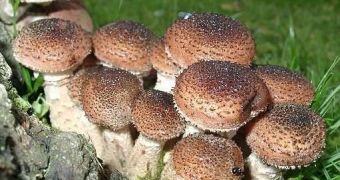Which is the world's largest living organism? You will be tempted to say something you can see. Like the blue whale in the case of animals or the sequoia tree when it comes to plants.
But you're wrong: it is something you do not even see, but it slowly grows by millennia. It's an enormous tree killer named the "humongous fungus" from the Armillaria ostoyae species.
The huge root-rot infestation is spread over 2,200 acres (8,9 square km) east of Prairie City in a remote corner of eastern Oregon's Blue Mountains at an altitude of about 6,500 feet (2,160 m) near the Strawberry Mountain and Monument Rock wilderness areas. Other Armillaria species (honey mushrooms) are more known as culinary delicacies.
"There is no way to eliminate it," said Malheur National Forest ecologist and tree expert Mike Tatum of John Day.
The underground fungus spreads its shoestring-like tentacles (rhizomorphs), wrapping tree roots. Its sheer mass could be even bigger than the currently estimated area.
"In terms of age, Armillaria is a fungiform Methuselah. Researchers say it may have been 100 years old when Alexander the Great conquered the known world in 330 B.C. And some estimates suggest it could be 8,000 years old," said Catherine Parks, a research ecologist with the Pacific Northwest Research Station in La Grande, who has studied the organism for 10 years in cooperation with Oregon State University.
"Age estimates are based on measurements of its rate of growth, but vary significantly because of the likelihood of weather and climate shifts over the millennia."
DNA fingerprinting and vegetative pairing revealed that this was a single organism and the biggest living thing on Earth.
"Researchers took samples from different sites and grew them together on petri dishes. Instead of forming barrier lines, samples grew together, establishing that they were of the same organism," said Parks.

 14 DAY TRIAL //
14 DAY TRIAL //